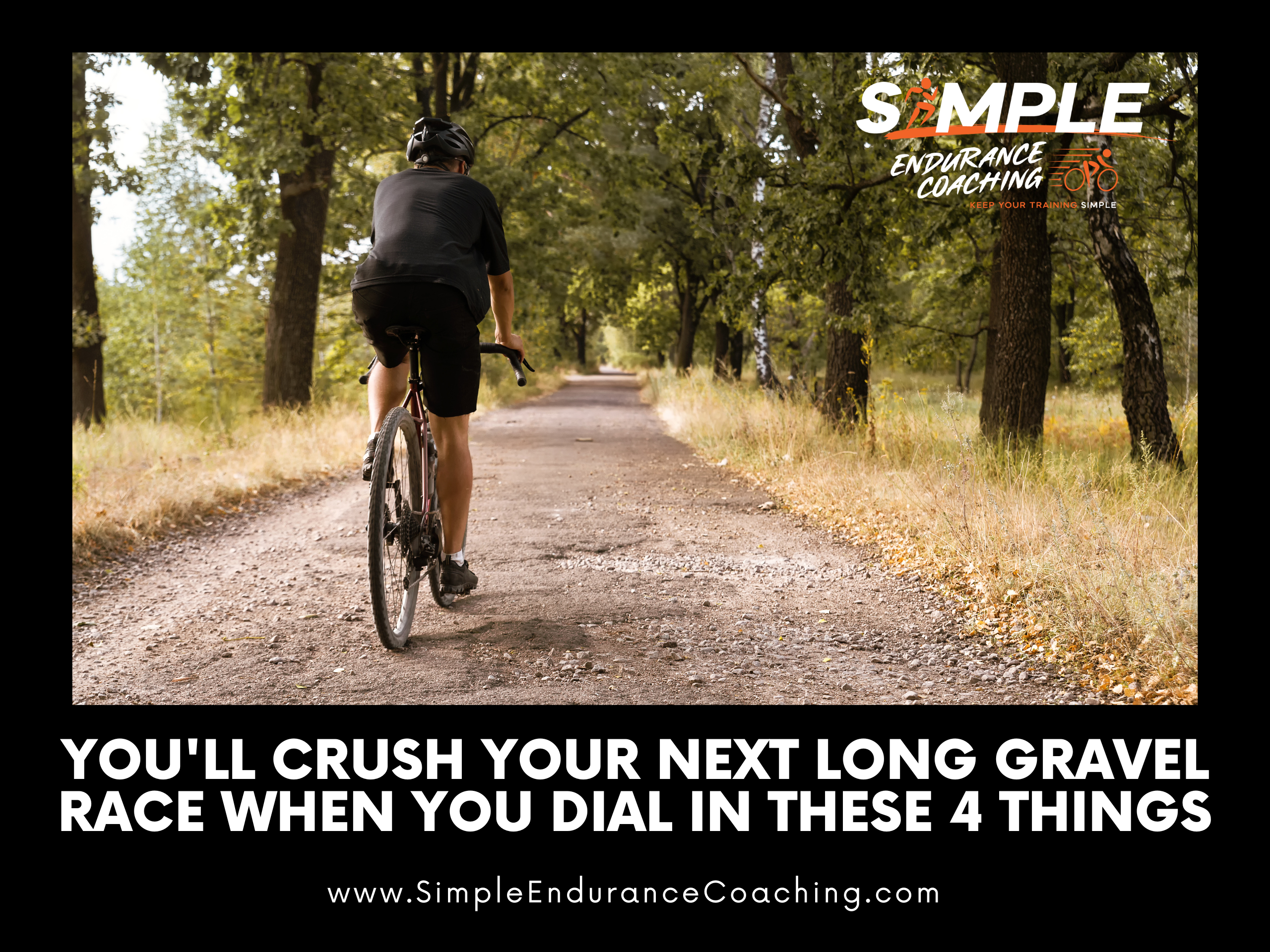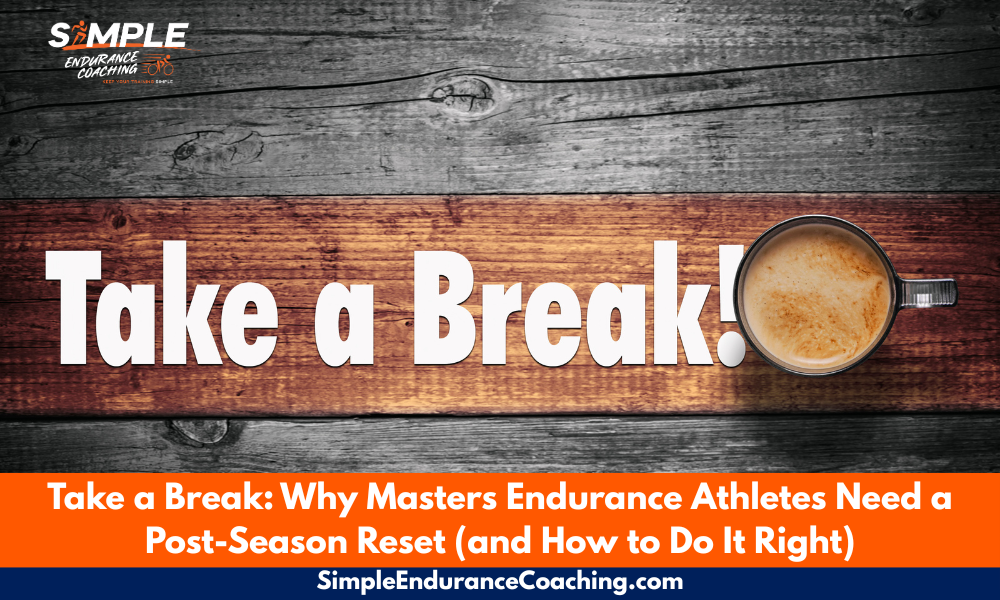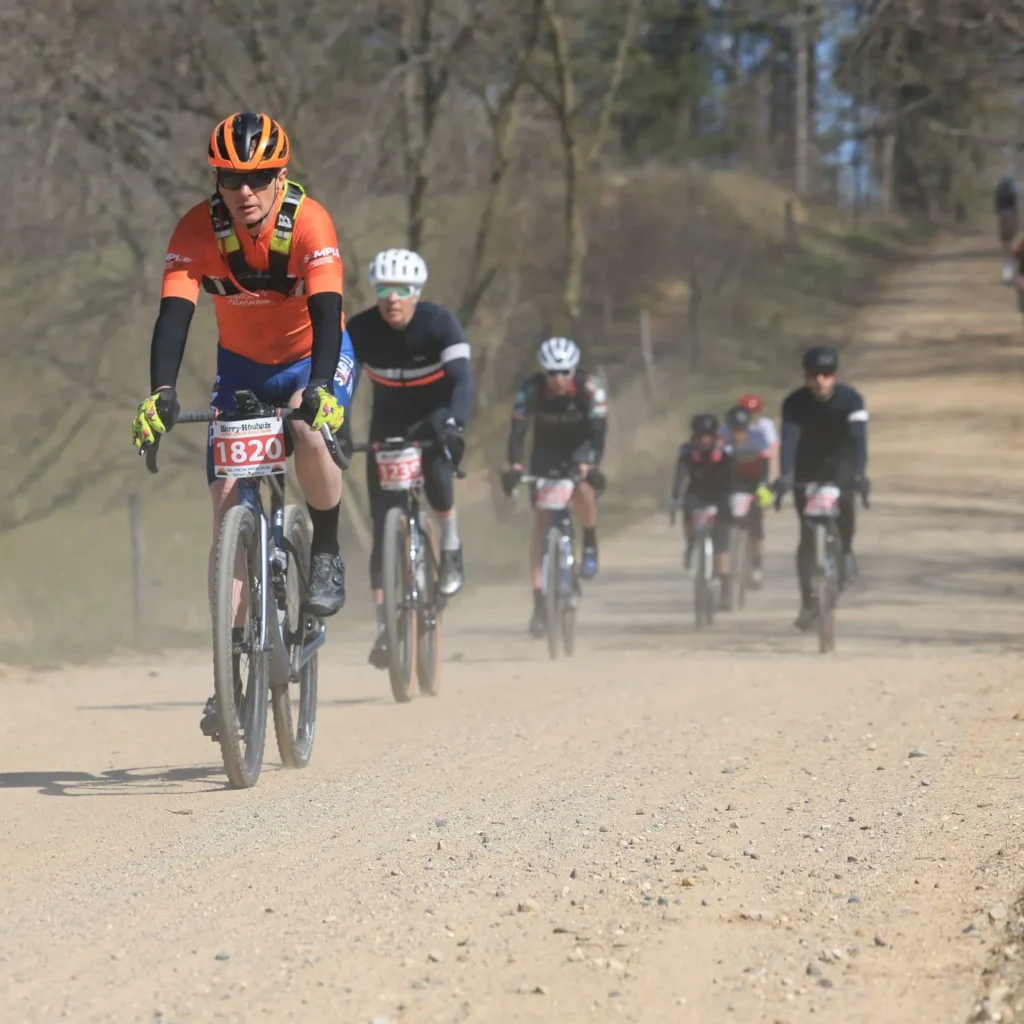Mastering Long Distance Gravel Races: Dialing in the Essential 4 Factors
Are you a gravel rider who craves adventure and loves to push your limits?
By incorporating scientific principles into your training, nutrition, mental toughness, and equipment choices, you can optimize your performance and leave the competition in the dust – pun fully intended.
We’ve been talking the past couple of weeks about how to train for the longer gravel races that are more common.
Our past two blog posts were about how to increase your threshold power and then how to extend the amount of time you can ride at your threshold power.

The key to long gravel races is endurance
The most important part of your training is endurance rides.
Lots of long rides at a moderate pace will help to increase your endurance and prevent burnout.
Plus, you can practice fueling your body properly during training.
A mix of carbohydrates and protein will help keep you going strong throughout the entire race.
You should figure out what mix of fuel works and what kind of food you can tolerate during training, not during the race.

Find out six of the best core exercises for cyclists – FREE
Join my newsletter to find out what works in endurance training for everyday cyclists and runners. Plus I share tips and adventures that my clients or I have taken.
Sign up now to get exclusive access to my free training video: Core Strength and Stability for Everyday Cyclists and Runners! This video is only available to subscribers and can change how you feel while riding or running!
Long rides to build fatigue resistance
If you’re looking to dominate your next gravel race, science has a few tips and tricks that can help you get ahead of the pack.
First, make sure you’re adequately trained for the distance you’re planning to race.
This may seem obvious, but many people try to wing it and end up paying for it later on in the race.
Build up your mileage gradually, allowing your body to adjust to the longer distances.
You don’t necessarily need to ride 200 miles to prepare for a 200-mile race, but the more time in the saddle you can get that approximates the time you’ll be riding will help!
By doing the long rides in training, you’re building fatigue resistance, so that your body’s systems – including muscular, cardiovascular, and respiratory – stay fresher for longer.
Proper fueling is the key for long distance gravel races
Second, don’t forget to fuel up properly before and during the race.
Gravel racing is a physically demanding activity, so you need to make sure you have enough energy to sustain yourself throughout the entire event.
Eat a lot of carbohydrates in the days before the race to top off your glycogen stores.
These stores live in your muscles and liver and provide the fuel you need to do long rides.
And make sure you have your nutrition dialed in.
Here are a few key things to keep in mind about nutrition:
Here are a few key things to keep in mind about nutrition:
Carbs are your friend.
When you’re exercising at a high intensity, your body relies on carbohydrates for energy.
That means that if you want to perform your best, you need to make sure you’re getting enough carbs in your diet leading up to the race, as well as during the event itself.
A good rule of thumb is to aim for about 45 to 90 grams of carbohydrates per hour during exercise.
This can come from solid foods like energy bars or gels, or from drinks like sports drinks or coconut water.
I rely on Embark Coffee Maple syrup and a carbohydrate powder I add to my water bottles.
I keep plain water in the hydration pack.
Protein, especially after the race, is critical.
While carbs are the main source of fuel during exercise, protein also plays an important role in helping your muscles recover afterwards.
That’s why it’s important to include some protein in your pre-race meal and snacks, as well as in your post-race recovery meal or shake.
It can be a good thing to add a little protein during the race, like peanut butter or beer jerky, but the science isn’t clear on the advantages.
Again, make sure you try some protein during training rides.
Gravel is a chance to work on your mental toughness
Remember that gravel racing is as much about mental toughness as it is about physical fitness.
If you’ve seen images from this year’s Unbound race in Kansas with several inches of thick mud, you know how challenging it must have been.
When things start to hurt midway through the race, it’s important to stay focused and push through the discomfort.
Visualize yourself crossing the finish line victorious, and let that drive you forward when things get tough.
However, this is also something to work on during the long training rides or interval sessions.
The more I can stay focused on pedaling and breathing, the less I focus on how uncomfortable I might feel.
Here are some skills to practice during training to get you into the right frame of mind for your next gravel race:
- Think positive: Having a positive attitude is crucial in any race, but especially in a long and difficult one like a gravel race. Believe in yourself and your ability to finish the race, and don’t let negative thoughts creep in.
- Visualize success: See yourself crossing the finish line, feeling strong and accomplished. This will help motivate you during the tough moments of the race.
- Focus on the present: Don’t dwell on what’s ahead or behind you, just focus on the here and now. Stay in the moment and stay focused on your breathing and your form.
- Set realistic goals: Don’t put too much pressure on yourself by setting unrealistic goals. Be realistic about what you can achieve, and set achievable goals that will keep you motivated throughout the race.
Equipment and gear needed for a gravel race
When it comes to endurance gravel racing, having the right equipment can mean the difference between a podium finish and an early exit.
Ben Delaney of The Ride has a lot of really good information about gravel equipment. Check out his YouTube channel.
Here are essential pieces of equipment that every gravel racer needs:
A road bike with wide tires: Most gravel races are held on dirt roads, which means that you’ll need a bike with wider tires than a typical road bike in order to maintain traction.
Look for tires that are wide, and make sure they’re properly inflated – too much pressure will cause them to slip on loose surfaces, while too little pressure will increase rolling resistance and make pedaling more difficult.
I have several different tubeless tire options, from slicks to thick treads.
My go-to race tires are 42mm Challenge Gravel Grinders, with a file tread in the middle and knobs on the outside, similar to my favorite cyclocross tire: Challenge Chicanes.
Tire pressure is an endless debate and entirely depends on you and the course.
Do you need higher pressure because of lots of holes or roots?
Generally, I run fairly low pressure so my tires are a little squishy.
Other important gravel racing gear:
- Eye protection: Dust kicked up by other riders can quickly turn into an uncomfortable experience if you don’t have eye protection. Sunglasses or clear lenses with anti-fog coating are good options, but make sure they fit well so they don’t slide down your nose when you start sweating.
- Bags: I’d recommend a saddle bag to carry some tools, and maybe a top tube or handlebar bag to carry food.
- Spare gear: Again, it depends on support, distance, and type of course. At a minimum, bring a pump and CO2 inflator with several cartridges, a spare tube in case your tire rips apart, several tubeless plugs, and a multi-tool.
- Hydration pack. While I’m not a fan of carrying a backpack on a bike, bringing lots of extra water reduces worry about having enough water. That way I can carry carbs and electrolytes in my water bottles on the frame and plain water in the pack.
Prepare as well as possible for your big event
With the right knowledge and strategies, you can use science to reach your goals in a gravel race.
All it takes is a little patience and research so that you know how to maximize your performance on the course.
From optimizing nutrition and hydration during training, to planning for recovery after each session, having an informed view of physiology will help keep you fueled up and ready for success!
Whether your goal is simply finishing or crushing the age-group competition at your next 100-mile gravel race, preparation with attention to these details will get you as prepared as possible.
Four things to consider about preparing for a long gravel race
- Do most of your training as long endurance rides to build fatigue resistance.
- Practice eating a lot during the long training rides.
- Practice your mental toughness by focusing on your breathing and pedaling during the long rides.
- Dial in your equipment to prepare for the worst!
Need more about long distance gravel races?
Sign up for Virtual Coffee so we can discuss your goals, ask questions, and talk about making your endurance training more effective, fun, and Simple.
Get a free Core Strength and Stability training video when you opt-in to receive my weekly blog posts about what works in endurance sports.
Paul Warloski is a:
- USA Cycling Level 3 Coach
- RRCA Running Coach
- Training Peaks Level 2 Coach
- RYT-200 Yoga Instructor
- Certified Personal Trainer




